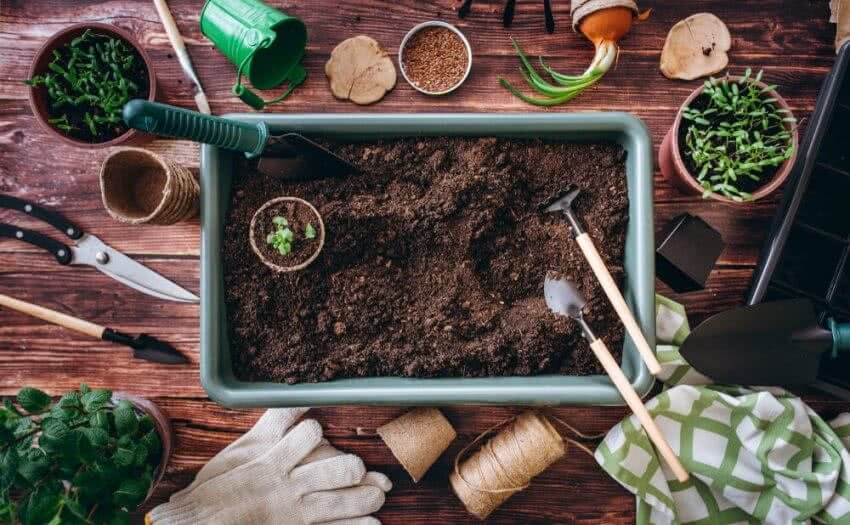
Composting 101: Everything You Need to Know to Start Composting at Home
Now that we live with the pandemic crisis, you may stay at home and cook more often. Aside from planning your meals, it is also important to reduce your food waste to help make a positive impact on the environment. Well, you can do this through composting.
You may not know it, but composting at home is beneficial in reducing your food waste. You are also assisting to save mother earth. Whatever the size of your home is, you can make your food waste an earthy compost.
Do you want to begin composting at home? You can follow the steps below:
Choose Your Food Scraps
You can begin composting by choosing food scraps. You can always start with your vegetables and fruits. You can compost material like old flowers, coffee grounds, sweet potato skin, top of the strawberry, eggshells, and tea bags. You can also use dairy products and meat. These materials can attract rodents, so it is better to compost them.
Foods that can attract pests are ideal for composting. These may include oily things, cooked food, as well as buttery things and bones. You can also find products that are labeled ‘compostable’ such as compostable wipes and compostable bags. Usually, these compostable materials are from industrial facilities.
Storing Food Scraps
After you determine your food scraps, you can store them. Take note that the scraps from your kitchen must be included for a thoughtful layering process for faster decomposition. You can keep them in a container and bit by bit add them.
You don’t need to worry about the container because it can be simple as an old carton of milk. You can use it to store the first chop of your veggies. On the other hand, you can also keep the food scraps in a bag at the back of the fridge or in the freezer. It can be beneficial to prevent foul smell and insects in your kitchen.

Select A Place Where You Can Make A Compost
In this step, you must consider the area where you live. If you wish to make traditional composting but don’t have a backyard, you can share a compost pile in your local community garden or with your neighbors and place your food scraps there.
Make sure to apply social distancing, especially in today’s pandemic time. You can also give away these food scraps if you know someone who can make a compost. In fact, your food scraps will be pick up in your municipality as part of its cleanliness program.
If you have an outdoor area, you can use your compost bin for your composting. You can use an old trash bin for your composting needs.
Make A Compost Mix
The next step is making a compost mix. If you don’t know, compost materials can be categorized into 2, the browns and greens. These are the basic ingredients of your compost mix.
The greens are usually the food scraps such as vegetable and fruit peelings or coffee grounds. Grass clippings are also good if you have a yard. Greens offer nitrogen, which is essential for microbial growth. Keep in mind that microorganisms are very important in the process of composting. Thus, they do the part on the lifting of decomposition.
On the other side, browns are rich in carbon. Examples of brown compost materials are newspapers, egg cartons, pine needles, and dried leaves. Remember that greens are usually wet, and brown material is commonly dry. As you make the layering process, you can place the dry browns first on the bottom, while on top would be the wet greens.
The browns are important for the water and airflow, which is called aeration. With this process, the microorganisms can perform their job well. You can layer it with browns than greens and repeat the process. The layers may depend on the food scraps amount and your space. It is advisable to have an inch or 2 layers. You can place a small amount of brown to avoid odors and flies.

Be Patient and Aerate
The last step is you need to wait and then aerate. How long does it take before decomposition? When it’s hot, it may take about 2 months. If it’s cold, it can take about 6 months. Furthermore, it can take a year before the components break down.
You can turn the pile using a spade or stick to make sure things are moving. You may turn the compost at least once in 10 days. The higher the amount of your compost, the faster it will take. If it has a bad odor, chances are it doesn’t decompose, or you may have a wet pile. With this, you can adjust the ratios of browns and greens. A successful compost is a fluffy and earthy compose which you can place in your garden.
Now you have learned how to compost at home. Let us know about the benefits of composting.
Advantages of Composting at Home
One advantage of composting is that it is free. It can also help you to save on landfill fees. Composting is also beneficial to improve the structure, aeration, and texture of the garden soil. It is also a good way to make the soil balanced and healthy.
Compost can enhance the fertility of the soil and stimulates the plants’ healthy root development. With a compost, you can allow sandy soils to retain water and loosen clay soils. You don’t need to use fertilizer because it comes with nutrients that can help with the optimum growth of plants. These nutrients are phosphorus, nitrogen, potassium, and more.
If you want to reduce food waste at home while helping to reduce environmental issues, composting is the best option.
Conclusion
To sum it up, composting at home needs patience and effort. You can experience unexpected things, so you must learn to wait for your home composting. Do you want to start reducing food waste at home? What are you waiting for? Start composting at home today!




